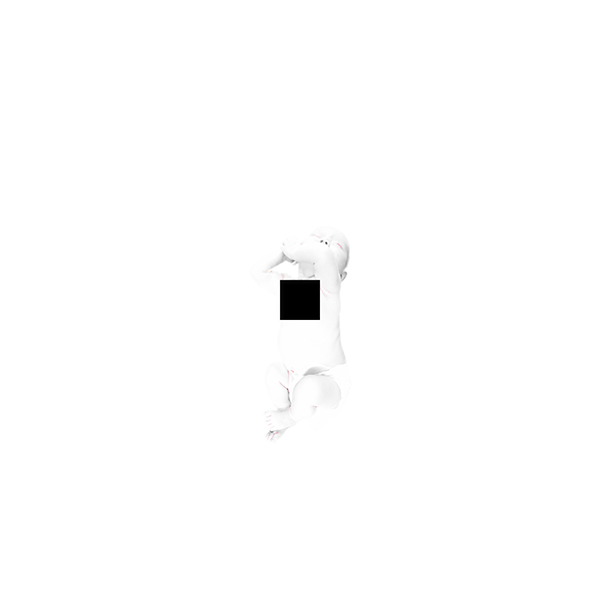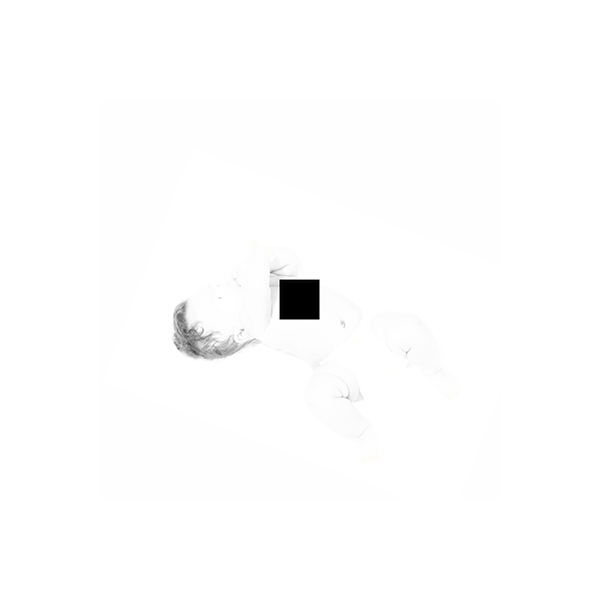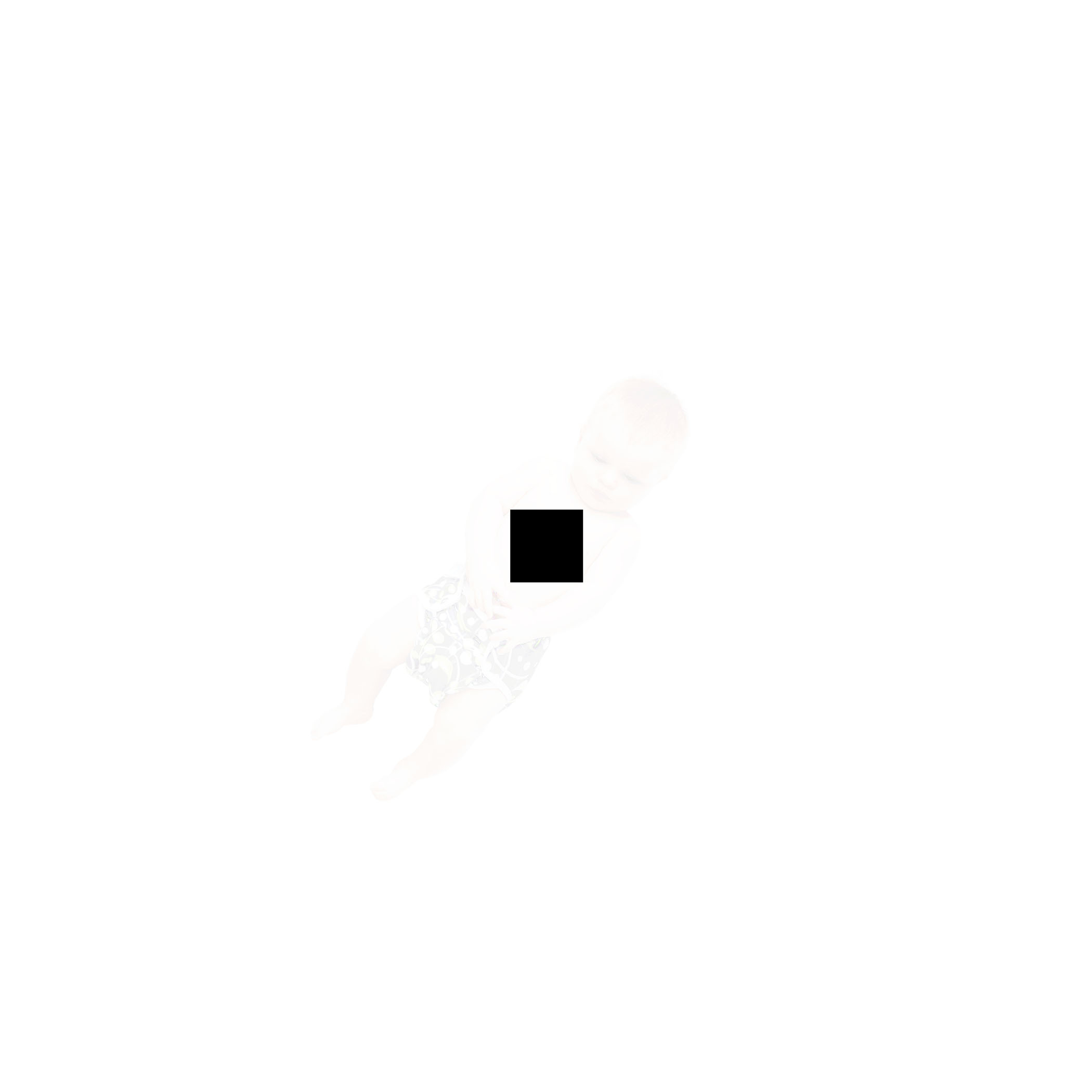INCONCEIVABLE, 2013-15, Inkjet prints on Hahnemuhle paper, 30 x 30 inches, 32 x 32 inches framed
INCONCEIVABLE brings cruelty home, using the most innocent of subjects. The series features healthy babies with chests exposed, marked by squares. Victims of genocide have been “marked” in countless ways, labeled and numbered with tags and tattoos. In INCONCEIVABLE, the black square is yet another branding,1 a superimposition to remind that any genocide reveals the banality of evil and the ubiquity of guilt.
On first viewing, the square may not induce dread. It is an ostensibly “neutral” abstract form familiar in the visual language of modernism, as in Kazimir Malevich’s Black Square (1915). INCONCEIVABLE means to create icons that combine the polarities of visual language — the sentimentality and familiarity of baby pictures and pure forms of abstraction. These pictures are an endgame; they “resonate,” “talk back,”2 and induce empathic unsettlement.3 They are metapictures, pictures that are used to reflect on the nature of images. 4
INCONCEIVABLE conflates the “first” and “last.”5 Most anyone feels protective of babies; their innocence is seductive. We delight in typical baby portraits (first pictures). Here we are threatened by their dissolve, blanching into darkness. The black squares stigmatize with false or actual guilt. These are “first” and “last pictures,” with assertive voids — the emptiness of Nihilism, the absence in Genesis, or the pregnancy of the Buddhist plenum void, from which anything can spring forth. At their center is the navel and wound — the beginning of life and its end.
INCONCEIVABLE presents collapsing worldviews. If the works are successful in inducing empathic unsettlement, they will lead us to feel for these children as if they were our own, even if ours are safe in their nurseries.6 But what if they weren’t? This question is at the heart of any movement for human rights. It precedes and strengthens the vow of “never again.”
1 Parenthetically, it also refers to the targets on the chests of Rwandan Hutus executed for genocide, long before the United Nations International Criminal Tribunal had delivered a single verdict. As of 2013, the United Nations International Criminal Tribunal that tribunal has yet to finish its work.
2 Mieke Bal, Travelling Concepts of the Humanities (8-10).
3 Dominick LaCapra, Writing History, Writing Trauma, The Johns Hopkins University Press, Baltimore 2001, p. 102
4 See 2006 interview by Asbjørn Grønstad and Øyvind Vågnes with W. J. T. Mitchell in Images: Journal for Visual Studies http://www.visual-studies.com/interviews/mitchell.html
5 Trevor Paglen's The Last Pictures is a project that creates a visual record of our contemporary historical moment. Working with materials scientists at Massachusetts Institute of Technology, he developed an artifact designed to last billions of years—an ultra-archival disc, micro-etched with one hundred photographs and encased in a gold-plated shell. This disc was mounted on the anti-earth deck of the communications satellite EchoStar XVI, launched from Kazakhstan into geostationary orbit in November 2012. It will circle the Earth until the Earth itself is no more.
6 Linda Benedict-Jones, Curator of Photography at the Carnegie Museum of Art, informed recent Center for the Arts in Society workshop attendees that close to 80% of photographic images made today are of children.
Related works: http://artscool.cfa.cmu.edu/~johnson/charge.html
http://artscool.cfa.cmu.edu/~johnson/retribution_stains.html
http://www.clevescene.com/cleveland/human-rights--make-a-wrong/Content?oid=1472444




